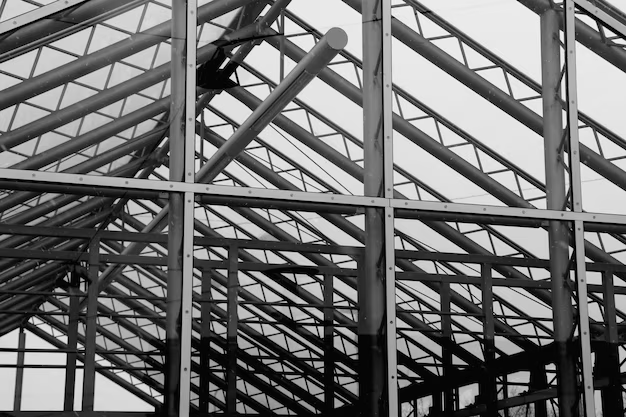Mastering the Art of Building Roof Trusses: A Guide for DIY Enthusiasts
Building your own roof trusses can be a rewarding project, offering both the satisfaction of craftsmanship and the potential for cost savings. Understanding how to construct these essential components is crucial for anyone interested in DIY home improvement. This guide will walk you through the basic steps and considerations involved in creating sturdy roof trusses while also pointing you toward additional resources for tackling larger financial projects.
Understanding Roof Trusses
Roof trusses are the structural framework that supports your roof. They distribute weight evenly and help prevent walls from buckling. Typically constructed from wood or metal, trusses are prefabricated in many cases, but building them yourself can be both economical and rewarding.
Materials Needed
- Lumber: Choose high-quality wood for durability.
- Fasteners: Screws and metal plates are essential for securing joints.
- Saw: A circular saw can cut wood to precise measurements.
- Measuring Tape: Accurate measurements are crucial.
- Safety Gear: Wear gloves, goggles, and a hard hat for safety.
Steps to Build Roof Trusses
1. Design and Plan
Start by designing your trusses. Consider the roof pitch, the span of the area, and load requirements. This is the blueprint of your construction process.
2. Measure and Cut
Use a measuring tape to measure each piece of lumber accurately. Cut them to size using a circular saw. Make sure all pieces are cut at precise angles as per your design.
3. Assemble the Trusses
Lay the lumber on a flat surface for assembly. Align the pieces and fasten them with screws or nails. Use metal plates at joints for additional strength.
4. Install the Trusses
Lift the trusses onto the top of the walls. Secure them at the specified intervals. Ensure each truss is plumb and level, making adjustments as needed.
5. Inspect Your Work
Double-check the trusses for stability and alignment. Make necessary adjustments and ensure that they are securely fastened to the building structure.
Exploring Financial Resources
While building roof trusses can be cost-effective, it's essential to consider the broader financial aspects of home renovations and improvements. There are various resources available to support larger projects or unforeseen expenses:
- Home Improvement Loans: These can provide the extra funds needed for extensive projects.
- Government Aid Programs: Check for grants or subsidies aimed at promoting energy efficiency.
- DIY Workshops: Educational opportunities are available to enhance your construction skills.
- Credit Solutions: Utilizing credit responsibly can help manage renovation costs without depleting savings.
Considering these options can ensure that your project is both feasible and financially sound.
Financial Assistance Opportunities
- 📋 Home Renovation Grants: Investigate local or federal grants for energy-efficient home improvements.
- 🏦 Low-Interest Loans: Consider loans designed for enhancing residential properties.
- 📚 Educational Workshops: Join workshops for practical skills and tips on construction.
- 💳 Credit Card Offers: Look for cards with cashback or low-interest rates on home improvement purchases.
- 💡 Energy Efficiency Rebates: Many utility companies offer rebates for reducing energy consumption during renovations.
By understanding how to build roof trusses and exploring available financial resources, you can tackle your project with confidence and creativity. Whether it's a small-scale improvement or a larger structural endeavor, planning and preparation will guide you toward success.
